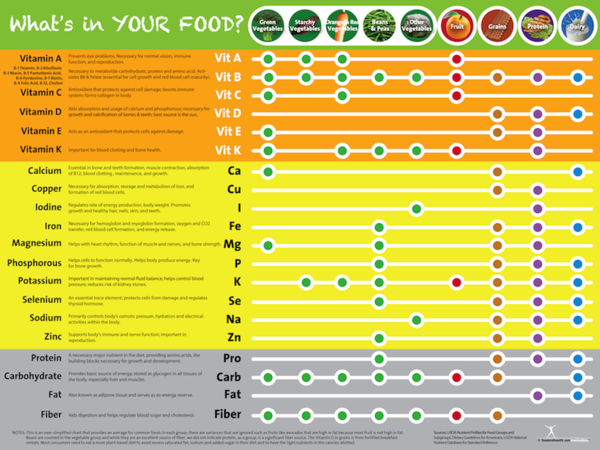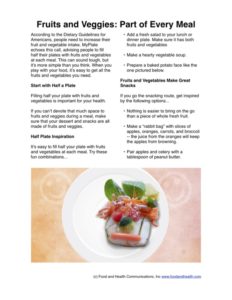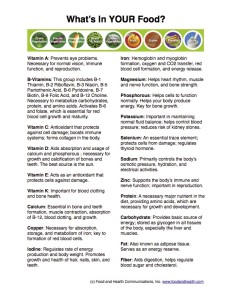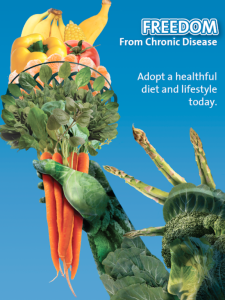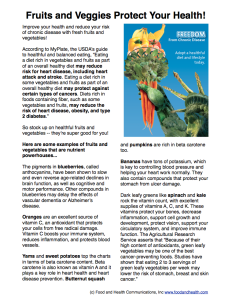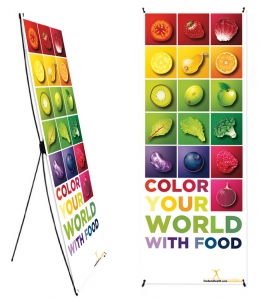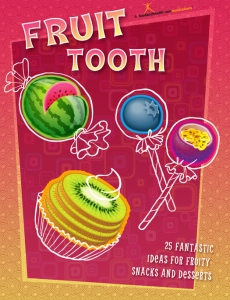Americans spend $41.2 billion a year on dietary supplements. The multivitamin/mineral is most popular, taken by one-third of adults and nearly one-quarter of children (1). But we know that most people can get the nutrients they need from real food!
Besides wasting money, supplements can give people a false sense of security. Sure, one pill may provide 100 percent of the Daily Value for a long list of vitamins and minerals, but what about fiber, phytonutrients, healthy fats, and protein? And no supplement makes up for a high fat, high sugar diet.
We have two posters to help you get this point across to adults and children.
The Eat Your Vitamins poster shows the nutrients provided by each food group, making it clear that a varied diet means no supplement required! Activities based on this beautiful poster:
- Use the vegetable sub-categories on the poster to discuss the importance of eating a wide variety of veggies. Which sub-category provides the most vitamins? The most minerals? What vegetables do you regularly eat? Are you getting some from each sub-category?
- In a group setting, use the PDF handout “What’s in YOUR Food?” that comes with the poster. Assign each person or small group one or two nutrients. Have them explain to the class: 1) the function of the nutrient; 2) which food groups provide the nutrient; 3) examples of foods in the food group(s).
- Ask who takes a multivitamin/mineral daily. Why do you take it? What’s in it? Looking at the poster, which nutrients are in food but not in the supplement? Talk about the benefits of eating real food.
Our Make New Friends Food Groups poster is a fun way to teach kids how to build a healthy lunch that provides the nutrients (or friends!) they need AND meets federal school lunch guidelines. Of course, fruits and veggies are their best friends, so why not have both at every lunch? Activities to go with this poster:
- Ask kids to identify the “new friends” pictured on the poster. What food group does each “friend” represent? What other foods are in that food group? Use the “My Plate Strategy Guide” PDF that comes with the poster to discuss the food groups in more detail.
- Have kids write down what they had for lunch. Ask them to write the name of the food group next to each item they ate. How many food groups did you eat from? Was there a fruit, a veggie, or both? If you didn’t eat from at least three food groups, how could you change it?
- Talk about how some people take a multivitamin/mineral supplement every day, but most of us can get the nutrients we need from real food. What would you miss if you only took a pill, but didn’t eat real food? Does it sound like more fun to “make new friends” with the food groups?
(1) J Acad Nutr Diet. 2018;118(11):2162-2173.





